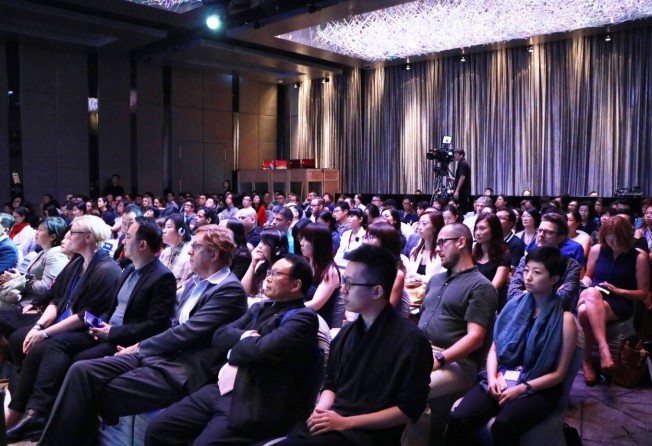Bringing together top minds in design to brainstorm the future

The Knowledge of Design Week (KODW) celebrated its tenth anniversary by once again providing an ideal platform for participants to meet, learn, and share a broad range of perspectives on the influences driving the latest global trends in design and innovation.
Organised by the non-profit Hong Kong Design Centre (HKDC) under the key theme of “Designing Service Futures”, attendees at the HKDC’s annual flagship event heard about different insights that can help Hong Kong’s service industries transform business challenges into competitive future services and build collaborative opportunities to enable the creation of new kinds of social and economic value.
The weeklong event from June 8 to 12 featured a lively mix of informative conferences and hands-on workshops structured to help designers and representatives from large and small businesses explore ways in which design thinking can give them a competitive edge in the fight to deliver innovative products and experiences.
Guest speaker at the opening ceremony, Jerry Liu, head of CreateHK, set up under the Commerce and Economic Development Bureau, told the capacity audience that the government considers design to be an important driver of economic success. “KODW is conducive to enhancing the competitiveness, and sustaining the development, of Hong Kong’s design sector,” Liu says.
During his remarks at the opening ceremony, Dr Edmund Lee, HKDC executive director, noted that servicing no longer refers to a customer-facing frontline role, and that from finance to hospitality, marketing and IT, servicing is the buzzword. “Future services need executives and designers with heightened sensibility to design, culture and technology,” Lee says, adding that new knowledge, and a new mindset, are needed to create empathy and human values that foster customer engagement, profitability and well-being.
Introducing himself as an anthropologist, because he is fascinated with culture, Tim Stock, assistant professor at Parsons The New School for Design, in the US, offers the view that as digital plays a role in daily living and becomes part of the cultural processes, brands need to be aware of changing cultures to engage with consumers. “You have to put consumers into the story,” says Stock, who is also co-founder and managing director of scenarioDNA. He was among more than 20 designers and industry and trend leaders sharing experiences and design challenges through recent projects which exercise design thinking and innovation in creating service experiences of the future.
Commenting on the advantages of taking calculated risk in design and innovation, Stephen Wong, CEO of Asia Miles Limtied, Hong Kong, advises: “Sometimes we plan so much that by the time an idea is implemented it’s already out of date. Our principle is: think about the risk. If everything fails, what will happen? If the risk isn’t that big, go for it,” Wong says.
Meanwhile, Simon Tye, Executive Director at research firm Ipsos Asia Pacific, of France, says data indicates consumers want to have brands that focus on them as individuals. “One of the fastest places this is happening in China, where the sense of self and individualism can be seen through bespoke shoes, eyeglass cases, to clothes,” Tye says.
As expanding urbanisation, accelerating technology, ageing populations and greater global connections revolutionise business in all sectors, Jason Cornelius, design director at FITCH, of Singapore, observed during his “Experience Signatures” session that in a world where there is more change every five years than there was in the past 50 years, “brands need to learn to adapt”.
Highlighting what it takes to translate a global brand for local markets, Naoyuki Yamamoto, director and vice-general manager, MUJI (Shanghai) Co., Ltd., offers the example of Hong Kong, his company’s centre of design and overseas business development, particularly for developing in the mainland. “We came to Hong Kong first and mainland visitors learned about MUJI in Hong Kong,” Yamamoto explains.
The strong theme resonating throughout the week was that designers should play to their strengths and strive to remain authentic.